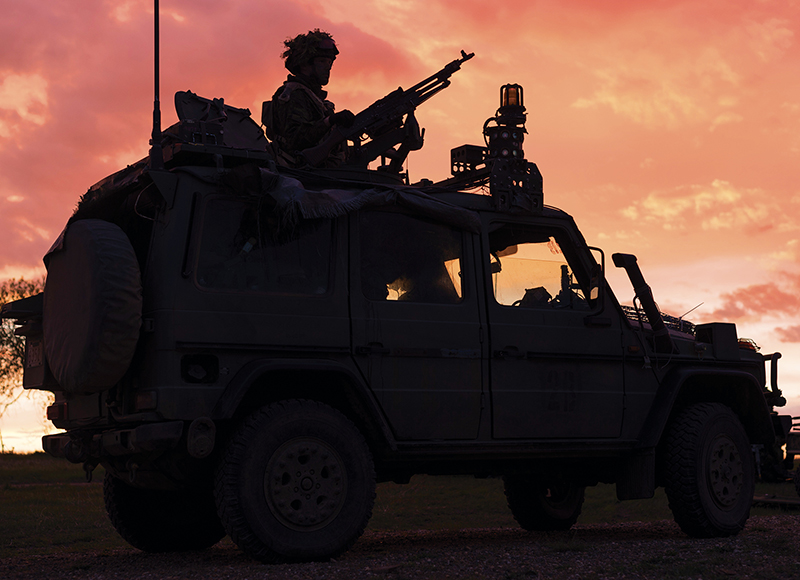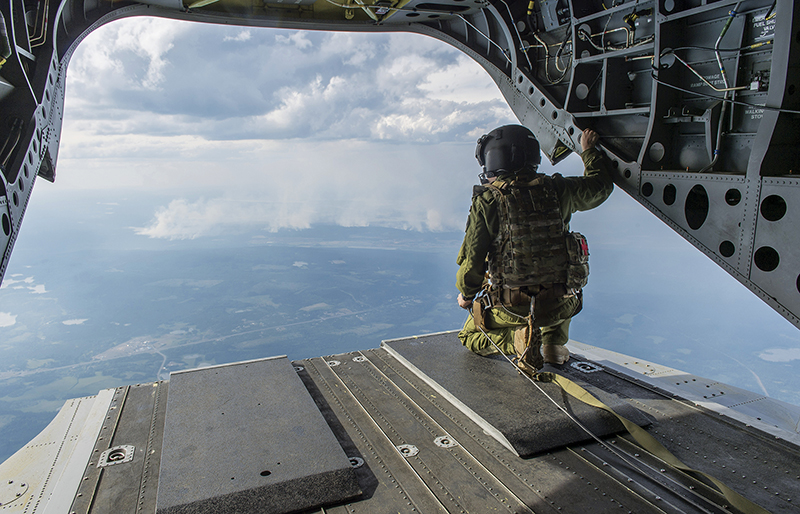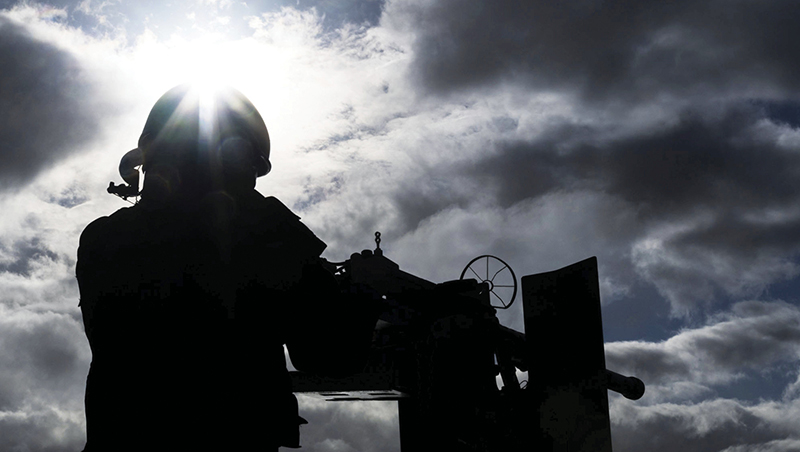Views and Opinions

DND photo PA-2017-0146-133 by Sergeant J.F. Lauzé
Navigating Towards a New Identity:
Military to Civilian Transition
by Darryl G. Cathcart
For more information on accessing this file, please visit our help page.
Soldiers, sailors, and aviators will eventually remove their uniforms and transition into civilian life. This is inevitable. It is said that these warriors become civilians again, but that civilian identity comes with the attached moniker, perhaps a burden to some, of veteran. For Canadian Armed Forces (CAF) veterans, there is often an uneasiness associated with embracing this new identity. Long-established veteran organizations, such as the Royal Canadian Legion (RCL) and the Army, Navy, Air Force Veterans in Canada (ANAVETS), have witnessed a decline1 in memberships in recent years, in spite of the fact that CAF veterans are offered a one-year free membership in those aforementioned organizations upon release. What does this shift to civilian-life mean? How does one identify as a veteran? How does a veteran rejoin civilian society in Canada and be at ease with their new identity? The change in identity from serving member to retired veteran is even more pronounced for those service members who were forced to release earlier than expected because of an injury, wound, or a chronic medical condition, whereby the opportunity to leave the military on one’s own terms was taken away. For new veterans, there is often a sense of loss and incompleteness.
There are legal definitions and colloquial understandings surrounding the word ‘veteran,’ but what is less definitive is how the mindset of former serving members accept the shift to becoming a civilian. Transition to civilian life occurs in, essentially, three ways; voluntarily, medically, or the result of a disciplinary or administrative issue. Most noteworthy among these exit pathways are medical releases, which have been increasing significantly, resulting in approximately 4,000 regular force members leaving the service between 2011 and 2014, as noted in a 2016 Veterans Ombudsman report.2 Given the predictable release patterns associated with voluntary and disciplinary cases, veterans who find themselves departing the military because of a medical issue are often led to question their future employability. Further complicating the identity shift for medically-released service members are several factors, including health, (both physical and mental), financial stability and outlook, family, friend, and social support networks, academic, vocational, or re-training requirements, as well as the general and specific emotional needs of the veteran. Either one of or a combination of these factors likely contributed to the joint Veterans Affairs Canada (VAC) and the Department of National Defence (DND) (2011), finding that 25% of the “…SCTL [Survey on Transition to Civilian Life] population reported a difficult adjustment to civilian life.”3

DND photo IS09-2017-0014-013 by Master Corporal Gabrielle DesRochers
Veterans leave the familiarity of military life, where a unique culture exists inclusive of organizational specific language, values, ethos, traditions, and an expectation of selfless service from those with whom one serves. Discovering that an institutional decision has resulted in a determination that a service member is unfit to perform military duties, coupled with the associated employment implications, may lead medically released soldiers, and others, to be less welcoming of the term ‘veteran.’
From enrolment, the Canadian Armed Forces begins to shape the identity of service members. Cultivated through an extensive general indoctrination period, followed by occupation-specific training, soldiers, sailors, and aviators spend a significant amount of time learning about the military and their chosen field. In effect, two identities are simultaneously created: A larger CAF identity, which is soon reinforced by the uniqueness of training for a military specialty. By the time retirement comes around, service members have witnessed a personal transformation where the pervasive effects of military life have influenced them significantly. In effect, the military becomes part of one’s DNA.
The transformation that occurs within service members is often characterized by individual self-regulation. Initially, the military demonstrates then demands that soldiers follow a rigid set of rules and regulations. Military policies are enforced through disciplinary methods that are well-understood by all members. Retirement marks the dissolution of institutional influence and the reliance upon individual self-regulation. This is another key aspect in the transition to becoming a veteran, particularly with respect to medically-released service members, as there is a greater onus upon the ‘individual self-concept’ during such a disorienting time. Often, Canadian society continues to expect more from their former serving CAF members, as introduced by multiple scholars in this area of research, who recognized this effect when stating that, “…the military presents an example of a distinct role-based subculture that differs markedly from civilian life.”4 The end of military service is often characterized by veterans maintaining the similar, familiar self-regulatory demands of those in uniform, such as crisp haircuts and clean-shaven faces, where, conversely, those ex-service members who wear longer hair and grow a beard are often the brunt of teasing, albeit usually of a good-natured variety.

DND photo HS06-0956-287 by Leading Seaman Dan Bard
An immediate impact upon newly-released service members is that the long-established structure of regimented daily life is absent in the civilian world. From the visible and internationally-recognized identifiers represented through uniforms, to the traditional salute between ranks, through specialized qualification patches that adorn dress uniforms, all these elements underscore the hierarchy of the mission-focused CAF mindset. The absence of the structured familiarity of rank, military custom, and tradition becomes particularly apparent as veterans search for new employment. The more casual use of first names between co-workers, in comparison to the greetings associated with position or rank, the more extensive sharing of common areas, such as lunch and break rooms, and an overall less-structured environment are a few new aspects that veterans must individually address. In other words, the freedom associated with civilian life may create more conflict, anxiety, and friction for some veterans, who previously excelled in the more structured setting of the military. In a recent American study on veteran transition, one conclusion was that some veterans in new workplaces were occasionally unduly criticized because they possessed traits that saw them go above and beyond their job expectations.5 For medically-released veterans, feelings of awkwardness and uncertainty surrounding these new workplace interactions may come to the forefront, especially if those former service members are suffering from a non-visible injury or a chronic disease.
For veterans, leaving an operationally-focused, frequently-dynamic military to a more stable and routine lifestyle can be shrouded in a disorienting cloak. The transitory nature of military service will often find the releasing service member searching for a new place to live, a new community within which to create bonds, and often, to plant roots in one location, as opposed to moving every few years, as is the military norm. Contributing aspects in a post-military move may include the requirement to be in a more urban setting for spousal employment, specialized medical care, or to accommodate pursuit of a chosen training program. This move amplifies the isolation experienced by many veterans, who now find themselves further detached from active CAF members and bases, where familiar and common bonds can be called upon as needed. Additionally, studies with respect to Canadian veterans recognized that the convergence of pre-and post-military life is frequently in conflict with each other,6 thereby adding to the turmoil of transition, and what it means to be called a veteran.

Royal Canadian Legion photo DSC _7471
Royal Canadian Legion Riders Launch.
Intertwined with the notion of growing into one’s new veteran identifier is the very concept of a ‘successful transition’ itself. What may work for one service member may not work for another. Recently, different studies discovered a wide range in the number of those veterans who reported that they experienced a difficult transition, actually reaching a high of almost 38%, 7 compared to the 25% of difficult transitions assessed by the aforementioned Veterans Affairs Canada study.8 Furthermore, some researchers have postulated that there is “…no consistent measurable definition of successful military transition.”9 Considering that the annual number of CAF releases is around 5,000 service members, this would suggest that up to 1,900 retirees may expect to have a difficult transition for several reasons, resulting in varying levels of post-military success. Each retiring service member must come to terms with what the notion of veteran means to him or her, and how this new identity will be embraced. More Canadian specific research is warranted with respect to veteran identity, and particularly, the impact of transition upon medically-released service members. Unlike other professions, where retirees are referred to as a former-schoolteacher, police officer, or doctor, a military service member is called a veteran regardless of what he or she did in uniform. Whether a plumber, a pilot, or a ‘tank driver,’ the term of veteran is equally and proudly assigned to all, but many are unsure of and/or reluctant to embrace the implications that accompany this new categorization.
Darryl Cathcart enrolled in the Canadian Army as a Private soldier in the Royal Canadian Regiment, commissioned from the ranks, and retired as a senior officer. He is currently a Master of Education student at Queen’s University, with an interest in adult education and leadership. Darryl is conducting research on the individual decision-making process surrounding a mandatory mid-life career change. During his army service, Darryl deployed to the Balkans twice, to Kosovo, and to Afghanistan. He is a graduate of the Royal Military College (with distinction), the United States Marine Corps Expeditionary Warfare School, and the Joint Command and Staff Programme at the Canadian Forces College.

Royal Canadian Legion photo DSC_3915
Royal Canadian Legion Soldier On Afghanistan relay team.
Notes
- Royal Canadian Legion, Membership Matters, Spring/Summer, 2015, at http://www.legion.ca/uploads/2015/03/MEMBERSHIP-MATTERS-March-2015-_eng_V2.pdf.
- Office of the Veterans Ombudsman, Support to military families in transition: A Review (Ottawa: Government of Canada, 2016).
- Jim Thompson, Mary Beth MacLean, Linda Van Til, Jill Sweet, Alain Poirier, David Pedlar, Jonathan Adams, Vaugh Horton, Kerry Sudom, and Catherine Campbell, Survey on Transition to Civilian Life: Report on Regular Force Veterans, (Ottawa: Research Directorate, Veterans Affairs Canada and Director General Military Personnel Research and Analysis, 2011), p. 8.
- Timothy Black and Chiara Papile, “Making it on civvy street: An online survey of Canadian veterans in transition,” in Canadian Journal of Counselling and Psychotherapy, Vol. 44, No. 4, (2010), pp. 383-401.
- Kevin Rose, Ann Herd, and Stephanie Palacio, “Organizational Citizenship behaviour: An exploration of one aspect of cultural adjustment faced by U.S. Army soldiers transitioning from military to civilian careers,” in Advances in Developing Human Resources, Vol. 19, No. 1, (2017), pp. 14-24.
- Susan L. Ray, and K. Heaslip, “Canadian military transitioning to civilian life: a discussion paper,” in Journal of Psychiatric and Mental Health Nursing, Vol. 18, No. 3, (2011), pp. 198-204.
- Black and Papile, p. 383.
- Thompson et al., p. 8.
- Mary Beth MacLean, Linda Van Til, Jim Thompson, Jill Sweet, Alain Poirier, Kerry Sudom, and David Pedlar, “Postmilitary adjustment to civilian life: Potential risks as protective factors,” in American Physical Therapy Association, Vol. 94, No. 8, (2014), p. 1187.







